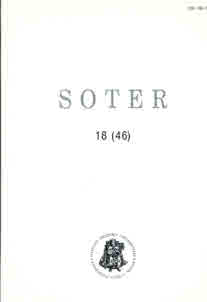Kaip suprantama religijos laisvė Romos katalikų Bažnyčios ir Europos Sąjungos dokumentuose
How is explained the freedom of religion in Catholic Church and European Union documents
Author(s): Saulius BytautasSubject(s): Christian Theology and Religion
Published by: Vytauto Didžiojo Universitetas
Keywords: Europos Sąjunga; Europos Sąjungos Konstitucija; religijos laisvė; krikščioniškos Šaknys; European Union; European Union Constitution; religious freedom; Christian roots;
Summary/Abstract: Analyzing the contracts for the European Union Constitution we can observe there is not enough attention put on the religion and its essentiality. As far as Maastricht pact is concerned, there are no references to the religion; however, during the considerations of this contract there was a question risen about how important religion is for the European Union. Consequently, it was decided to follow European Human Rights convention. Under the agreement of Amsterdam, the religion discrimination was forbidden; however, it’s not a significant achievement since Europe had substantial Christian roots. The Nice charter didn’t issue resolutions favorable for the Church yet, it was decided that a person could be exempted from soldering due to his belief. Although, it was not a huge gain, faithful people got more rights. The European Union Constitution is not ratified yet: it is necessary that it would be accepted by all the members. To be more specific, in case there is one member country which rejects the European Union Constitution, the document would be rejected in the whole European Union. It is common for all the member countries and doesn’t contradict their constitutions. Actually, European Union understands religion freedom in a very primitive way since it appreciates and shows the tolerance for religions. The Catholic Church claims that religion freedom must be related with searching for the truth: it’s not enough to show the tolerance externally; it is important to make moral principles dominate as they are a cornerstone for generating European moral in a right way while discussing and carrying statues.
Journal: SOTER: religijos mokslo žurnalas
- Issue Year: 48/2006
- Issue No: 20
- Page Range: 117-129
- Page Count: 13
- Language: Lithuanian

